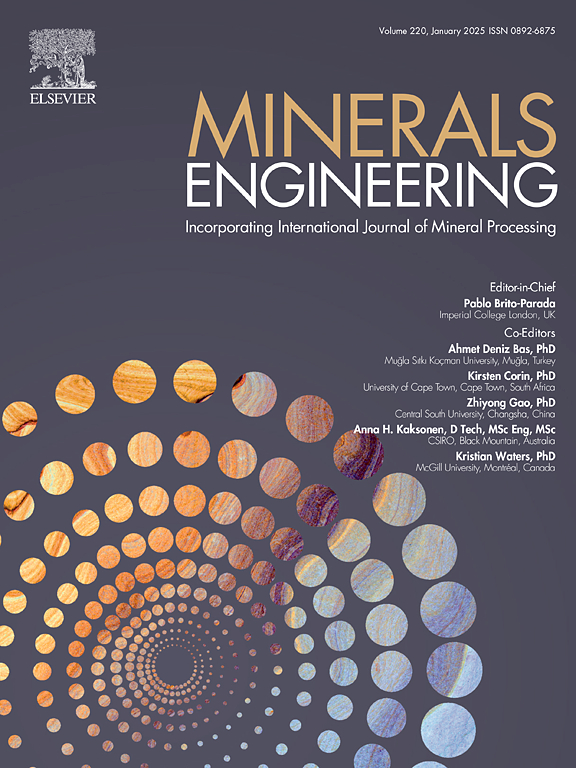Preliminary study of the suitability of an abandoned mining area for harvesting efflorescent sulfate salts in the Iberian pyrite Belt, Nerva (Spain)
IF 4.9
2区 工程技术
Q1 ENGINEERING, CHEMICAL
引用次数: 0
Abstract
This preliminary research was aimed at identifying a suitable area for producing efflorescent sulfate salts enriched in elements of interest. An old retention impoundment of heap-leaching liquors situated in the municipal district of Nerva, southwest of Minas de Riotinto (Iberian Pyrite Belt, Huelva, Spain), was chosen for the study. The study zone has a higher part composed of leached mine spoils containing washed ore and some roasted pyrite, and a lower part consists of a mixture of materials eroded from the higher parts. All the water that ends up soaking the lower, flatter surface, called the production area, comes from the rain that falls on it, plus the water that leaches and runs off in the old leaching heaps. Water and solid samples from old leaching heaps, substrates at the base of these heaps, and efflorescent sulfate salts formed over them in summer were collected. The efflorescent sulfate salts were highly acidic and concentrated in As, Cu, Pb, and Zn while relatively diluted in Co, Ni, and Sb. However, the average dissolved amounts, proportionally to the total content, were very high for Cu, Co, Ni, and Zn. Based on the results, it was concluded that harvesting efflorescent sulfate salts could be interesting for recovering Cu and Zn and, with more uncertainty, As, Co, and Ni.
求助全文
约1分钟内获得全文
求助全文
来源期刊

Minerals Engineering
工程技术-工程:化工
CiteScore
8.70
自引率
18.80%
发文量
519
审稿时长
81 days
期刊介绍:
The purpose of the journal is to provide for the rapid publication of topical papers featuring the latest developments in the allied fields of mineral processing and extractive metallurgy. Its wide ranging coverage of research and practical (operating) topics includes physical separation methods, such as comminution, flotation concentration and dewatering, chemical methods such as bio-, hydro-, and electro-metallurgy, analytical techniques, process control, simulation and instrumentation, and mineralogical aspects of processing. Environmental issues, particularly those pertaining to sustainable development, will also be strongly covered.
 求助内容:
求助内容: 应助结果提醒方式:
应助结果提醒方式:


